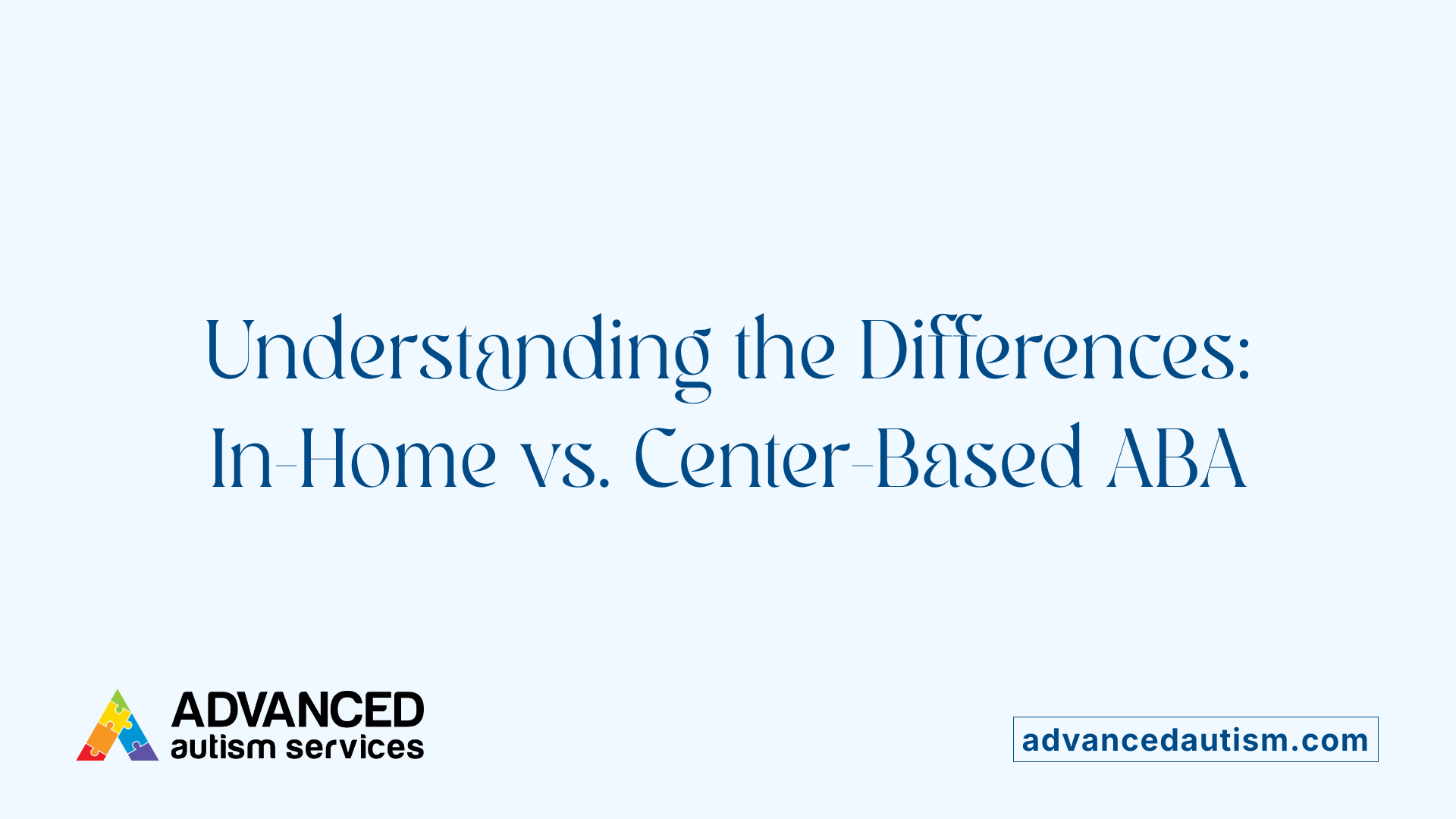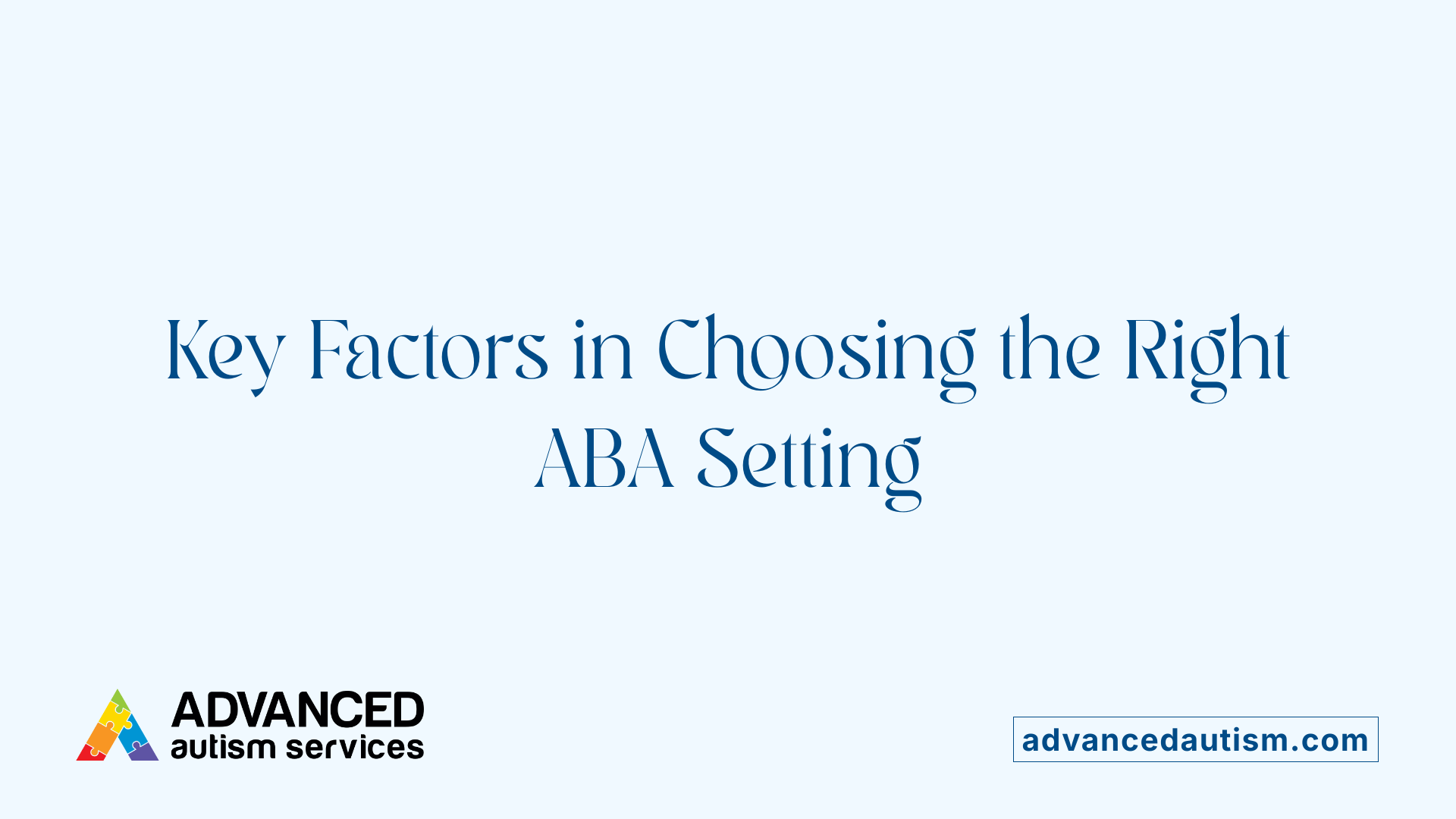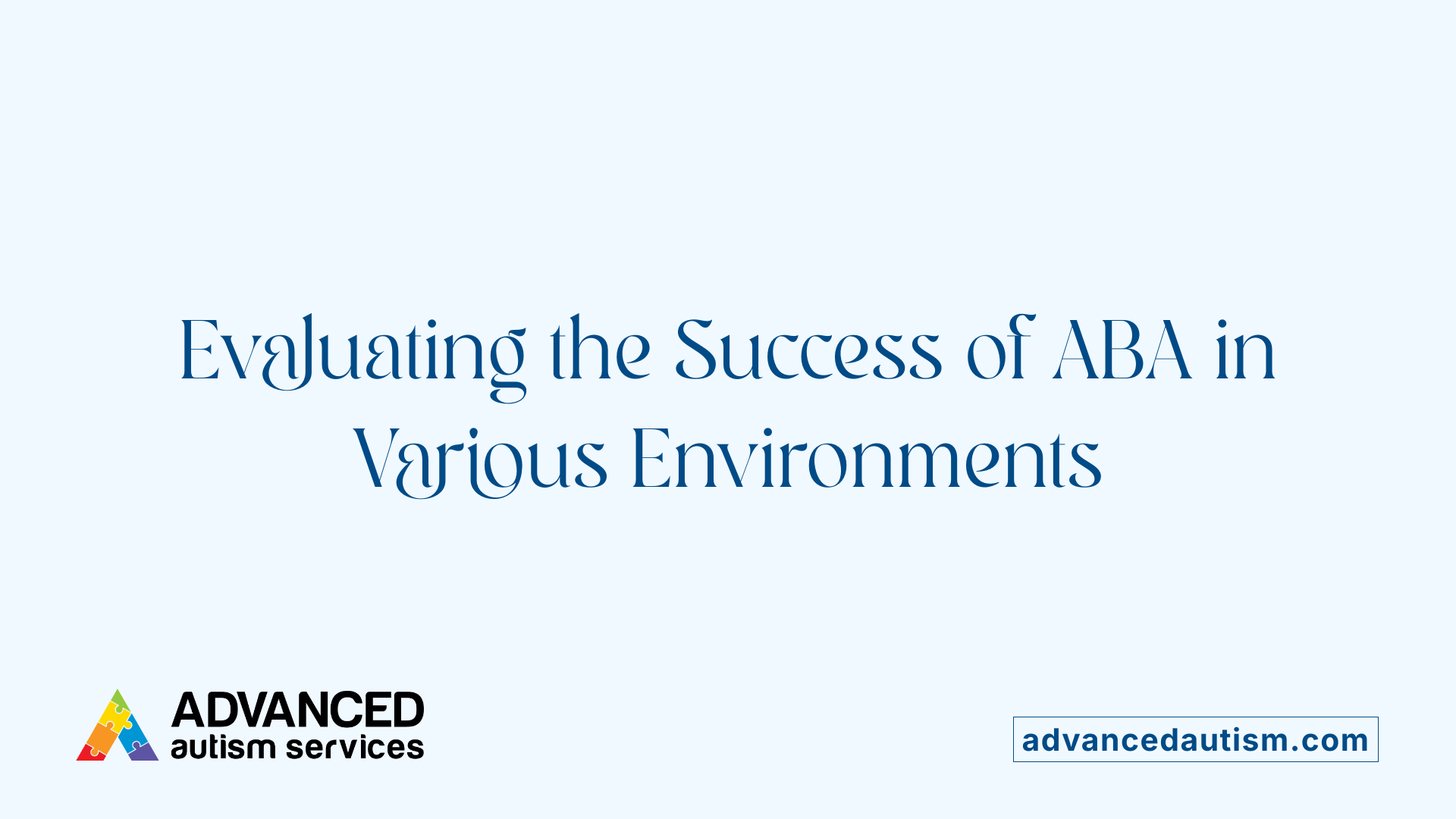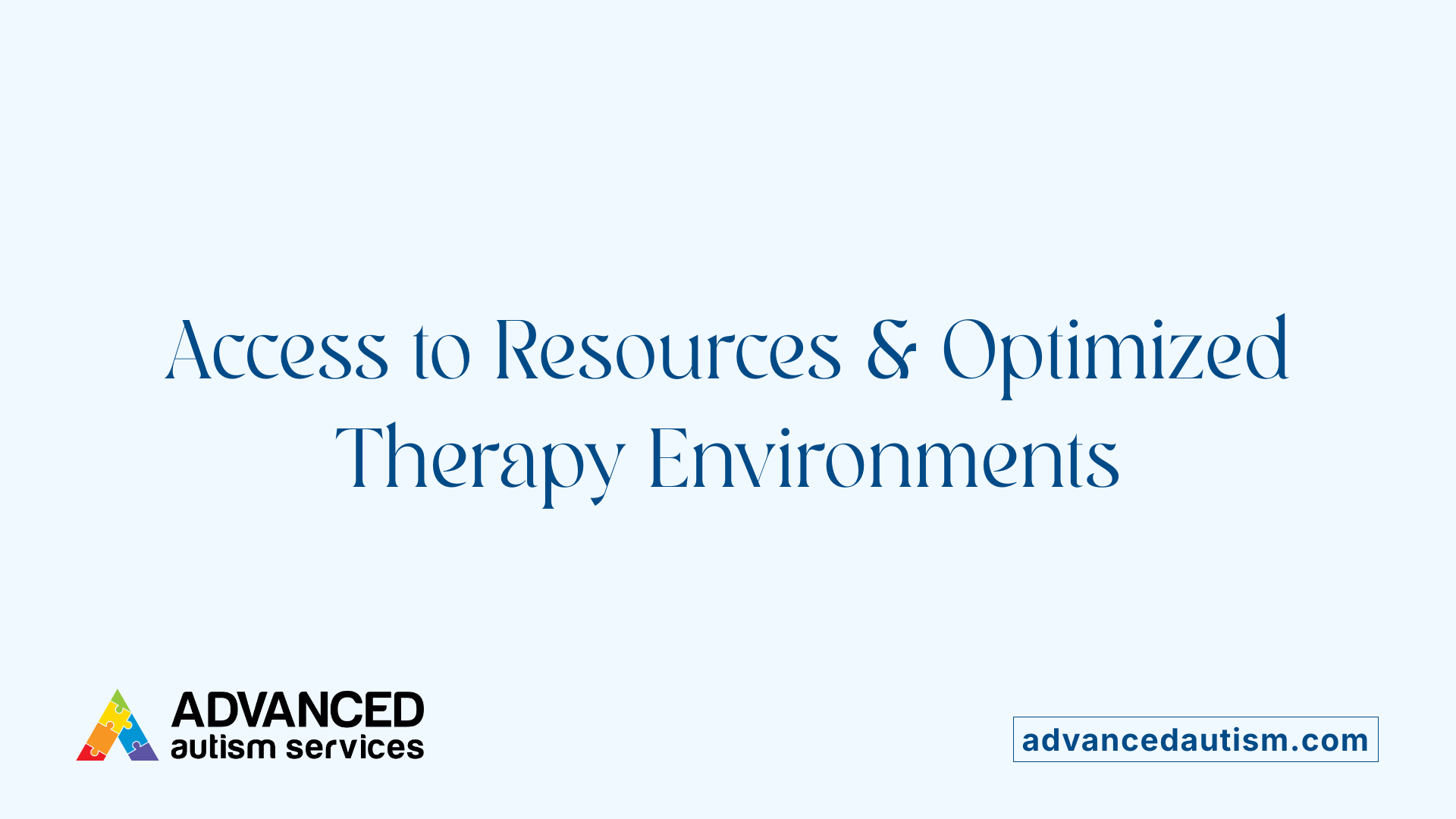How to Choose Between In-Home and Center-Based ABA Therapy
Understanding Therapy Settings to Make an Informed Choice
Introduction to ABA Therapy Environments
Choosing the right environment for ABA therapy is crucial for maximizing a child's development and comfort. Whether parents opt for in-home or center-based therapy, understanding the benefits, drawbacks, and factors influencing each setting can lead to better outcomes tailored to individual needs.
Overview of ABA Therapy Settings and Their Respective Benefits and Drawbacks
What are the different settings for ABA therapy and their respective benefits and drawbacks?
ABA therapy can be delivered in several environments, primarily in-home, center-based, or sometimes within educational settings such as schools. Each setting offers unique advantages and faces particular challenges, influencing the overall effectiveness and suitability for individual children.
Home-based ABA therapy involves sessions conducted in the child's familiar environment, usually at home. This setup facilitates personalized, one-on-one treatment tailored to real-life routines like brushing teeth or playing. It encourages family involvement, allowing parents to observe strategies and participate actively in the child's progress. The familiar setting can boost the child's comfort and confidence, promoting seamless skill generalization.
However, there are some drawbacks. Distractions may be present at home, making consistent focus a challenge. Additionally, the child's reluctance in familiar surroundings, or increased parental responsibilities, may impact session efficacy.
Conversely, center-based ABA therapy takes place in specialized facilities designed with structured environments, offering access to a variety of resources, tools, and a team of professionals including BCBAs and RBTs. Such settings support social development through peer interactions—an important aspect of learning social skills—and provide real-time feedback from staff.
Yet, traveling to and from the center can be inconvenient, especially for families living far away. Furthermore, since the environment isn’t the child's natural home, skills learned may require further effort to generalize to daily routines.
Some families opt for a hybrid approach, combining both settings to capitalize on the strengths of each. The choice depends on several factors such as the child's behavioral and developmental needs, family routines, logistical considerations, and insurance coverage.
Ultimately, effective ABA therapy hinges more on the quality of implementation and the care provided than on the setting. Whether at home or in a center, personalized, loving, and well-executed programs achieve positive outcomes.
| Setting | Advantages | Challenges | Suitable For |
|---|---|---|---|
| In-home | Personalized routines, family involvement, comfort | Distractions, parental responsibilities, reluctance | Learning daily routines, home skill generalization |
| Center-based | Resources, peer interaction, professional oversight | Travel burden, less natural environment, skill transfer | Structured skill development, social skills, peer engagement |
Choosing the right environment depends on the child's individual needs, family capabilities, and specific goals, often benefiting from a balanced, flexible approach.
Differentiating Between In-Home and Center-Based ABA Therapy

How does in-home ABA therapy differ from center-based ABA therapy?
In-home ABA therapy is conducted within the child's familiar environment, usually at home. This setting allows for highly personalized treatment tailored to the child's daily routines and the family's specific needs. Sessions are typically one-on-one, led by a registered behavior technician under the supervision of a BCBA, focusing on real-life skills like brushing teeth or playing with siblings.
Center-based ABA therapy takes place in a specialized clinic or therapy center. This environment is structured and resource-rich, often including areas designed for different activities and peer interactions. It offers opportunities for children to develop social skills through group activities and peer learning, with immediate feedback from a diverse team of professionals.
Location of therapy sessions
In-home therapy occurs at the child's residence, allowing natural routine integration, while center-based therapy happens in a dedicated facility, sometimes requiring travel. Transportation considerations can influence the choice of setting.
Personalization of treatment
Both settings offer tailored programs, but in-home therapy allows direct family involvement and real-world application. Center-based programs follow individualized treatment plans but focus more on structuring skill development in a controlled setting.
Socialization opportunities
Children in center-based programs often have more chances for peer interactions, which can improve social skills. In-home therapy may provide fewer social opportunities unless complemented by community or group activities.
Resource availability
Center-based centers typically have access to specialized tools, diverse therapy materials, and a team of professionals, enhancing the breadth of therapy options. In contrast, in-home therapists utilize household items and incorporate familiar routines, making therapy more practical and relatable.
Choosing between in-home and center-based ABA depends on the child's needs, family priorities, and logistical considerations. Combining both approaches can sometimes provide the most comprehensive support, leveraging the strengths of each environment.
Factors Influencing the Choice Between In-Home and Center-Based ABA Therapy

What factors should be considered when choosing between in-home and center-based ABA therapy for a child?
Selecting the appropriate ABA therapy setting involves evaluating several important factors tailored to the child's unique needs. First, the child's individual needs and preferences play a crucial role. Some children may feel more comfortable and confident in their familiar environment, making in-home therapy a good choice. Others may perform better in structured settings with resources and peers.
Next, the importance of social interaction should be considered. Center-based ABA offers opportunities for children to engage with peers, fostering social skills and collaborative play. Conversely, children who need focus on specific routines in a less distracting environment might benefit most from in-home sessions.
Family logistics are also vital. Factors like the family’s schedule, their flexibility, and transportation availability influence the decision. In-home therapy eliminates travel time, fitting seamlessly into daily routines, while center-based therapy may require time for travel but offers a structured program.
Finally, the child's developmental goals are essential in guiding the choice. If the goal is to generalize skills into daily routines and involve family actively, home-based ABA can be effective. To develop social skills and participate in group activities, center-based programs provide direct peer interaction and access to specialized resources.
Often, a combination of both settings—known as a hybrid approach—is recommended for optimal benefits. Consulting with experienced ABA professionals ensures that the therapy plan aligns with the child's specific needs and fosters the best opportunities for growth. Ultimately, the most important aspect is ensuring that the child's comfort, progress, and happiness are prioritized in the decision-making process.
Making an Informed Decision: Key Considerations for Families
 When deciding between in-home and center-based ABA therapy, families should consider their child's unique learning style and specific needs. Some children thrive in familiar environments that promote comfort and ease learning routines, making home-based therapy a good fit. Others benefit from the structured setting of a therapy center, where they can engage with peers and participate in diverse activities that support social skills development.
When deciding between in-home and center-based ABA therapy, families should consider their child's unique learning style and specific needs. Some children thrive in familiar environments that promote comfort and ease learning routines, making home-based therapy a good fit. Others benefit from the structured setting of a therapy center, where they can engage with peers and participate in diverse activities that support social skills development.
Family logistics, including availability, transportation options, and scheduling flexibility, play a significant role. For instance, in-home therapy eliminates travel time and allows for more flexible scheduling, which can ease daily routines. Conversely, attending a center involves planning for transportation and adapting to a new environment, which may be suitable for children who need structured routines.
Choosing a provider with proper credentials and experience is crucial. Families should verify that therapists are credentialed—such as board-certified behavior analysts (BCBAs) or registered behavior technicians (RBTs)—and have relevant experience working with children with similar needs. Visiting potential therapy sites, observing sessions, and asking about treatment strategies, data collection, and individualization ensure the choices align with best practices.
Transition planning is an essential factor. Whether transitioning from home-based to center-based settings or integrating various environments, gradual adjustment supported by careful planning can make the change smoother for the child.
In summary, the selection process involves evaluating the child's personalized needs, family resources, therapist qualifications, and the logistics of each setting. Ultimately, a well-matched environment that fosters comfort, consistent progress, and family involvement offers the best foundation for successful ABA therapy.
Effectiveness of ABA in Different Settings

Are both settings equally effective for ABA therapy?
Both home-based and center-based ABA programs have been supported by research as effective options for children with autism. Studies show that children can achieve meaningful progress in either environment when therapy is delivered with high quality and individualized attention.
The success of ABA therapy depends less on the setting itself and more on the quality of implementation, that is, how well the treatment plan is tailored to the child's unique needs and how consistently therapy strategies are applied. When trained professionals conduct therapy effectively, regardless of setting, positive outcomes are common.
Choosing between in-home and center-based setups should consider the child's specific requirements, family circumstances, and personal preferences. Some children thrive in the structured environment of a center, while others benefit from the natural surroundings of their home. In many cases, a combination approach provides the best of both worlds.
In summary, both environments can lead to successful ABA therapy outcomes, emphasizing the importance of proper implementation, qualified providers, and individualized treatment plans rather than the specific setting.
| Effectiveness Factors | Description | Benefits |
|---|---|---|
| Quality of Implementation | Expertly delivered, personalized treatment | Higher progress rates, skill generalization |
| Child’s Needs | Suitability of environment to child's sensitivities | Comfort, engagement |
| Family Involvement | Active participation and reinforcement | Skill retention, consistency |
| Resources and Support | Access to materials and multidisciplinary team | Skill development, socialization |
| Transition Planning | Smooth shifts between settings if needed | Continual progress, comfort |
Role of Family Involvement and Natural Environment
What are the advantages of in-home ABA regarding family involvement?
Home-based ABA therapy places a strong emphasis on active participation by the family. Parents receive training to implement strategies and reinforce skills outside of formal sessions. This direct involvement allows for consistent reinforcement of behaviors and skills within the child’s natural environment, which enhances skill generalization to everyday routines.
Family involvement also fosters emotional support for both the child and parents. It provides valuable insights into the child's preferences and needs, enabling the therapy to be more tailored and effective. When parents are engaged and well-informed, they can seamlessly incorporate therapeutic strategies into daily life, promoting faster and more meaningful progress.
How does skill generalization happen in natural routines?
In natural routines like brushing teeth, playing, or helping in household chores, children apply learned skills in real-life contexts. In-home ABA therapy utilizes these familiar settings to teach and reinforce skills, making the learning relevant and practical.
Parents participating in therapy learn how to embed skill practice into daily activities, ensuring that behaviors are not limited to therapy sessions but are integrated into the child's life consistently. This approach supports better retention and transfer of skills, which is crucial for successful development.
Additional considerations
Combining in-home ABA with parent training maximizes the benefits of natural environment learning. It also allows therapists to observe how children respond to different routines and to modify strategies accordingly. Overall, this environment is ideal for children who thrive in familiar settings and for those requiring ongoing, intensive parental support for their development.
Resource Accessibility and Therapy Environment

What resources are typically available in center-based ABA therapy?
Center-based ABA therapy often provides access to a variety of tools and resources that support children’s skill development. These include specialized educational toys, electronic devices, visual supports, and other learning aids designed to enhance therapeutic outcomes.
A team of trained professionals, such as board-certified behavior analysts (BCBAs), registered behavior technicians (RBTs), and other specialists, work collaboratively to implement individualized treatment plans. The structured setting allows for the use of multiple resources to address different developmental areas, from communication and social skills to daily living routines.
Having a dedicated environment filled with resources supports targeted skill acquisition and helps children generalize learned behaviors to various contexts.
How do resource-rich environments in centers benefit children?
Centers are equipped with diverse tools and materials that can accelerate learning. For example, dedicated areas for social play or structured learning stations provide real-time opportunities for practicing new skills.
Access to peer groups in these environments promotes social interaction and collaboration, which are essential for social development. The availability of specialized resources, such as sensory rooms or communication devices, can be particularly beneficial for children with specific sensory or communication needs.
How can therapy be tailored to a child's individual needs?
Both in-home and center-based settings aim to personalize therapy based on the child's unique profile. In centers, therapists can adjust activities and resources on the spot, utilizing a variety of tools suited to the child's preferences and developmental stage.
The structured environment allows for close monitoring and flexible modifications, ensuring that therapy remains engaging and effective. Ultimately, the choice and adaptation of resources are aligned with the child's goals, behavioral challenges, and sensory sensitivities.
| Setting | Resources Available | Advantages | Additional Details |
|---|---|---|---|
| Center-based | Educational toys, electronic devices, visual supports, sensory rooms | Structured learning, social opportunities, varied tools | Facilitates focused skill development and peer interaction |
| In-home | Routine-based tools, family-shared resources | Family involvement, natural environment, skill generalization | Supports daily routines and caregiver training |
Tailoring therapy to individual needs ensures that children receive effective interventions, optimizing their developmental progress in either environment.
Transitioning Between Settings and Flexibility in Treatment

Can children transition between in-home and center-based settings smoothly?
Yes, children can move between in-home and center-based ABA therapy environments smoothly when transitions are carefully planned. Gradual adjustments help children familiarize themselves with new settings, reducing anxiety and resistance.
Many families choose a hybrid approach, combining both in-home and center-based therapies. This strategy allows children to enjoy the benefits of personalized, familiar routines while also gaining socialization opportunities and access to specialized resources in structured environments.
Planning for a transition involves clear communication among therapists, parents, and the child. It may include visiting the new setting beforehand, introducing the child gradually, and creating a consistent routine across environments. Such steps help children develop comfort and confidence as they adapt to different therapy settings.
Overall, personalized transition strategies and flexibility in treatment settings support successful adaptability and foster ongoing progress in functional skills and social engagement.
Ensuring Quality and Credentials of Providers

What should families look for in ABA service providers?
When selecting an ABA therapy provider, families should prioritize credentials and experience. Certified professionals, such as Board-Certified Behavior Analysts (BCBAs) and Registered Behavior Technicians (RBTs), are vital for delivering effective treatment. These credentials indicate that the therapists have undergone rigorous training and adhere to established standards.
Beyond certifications, it is important to assess the provider’s experience, especially with children who have similar needs and behavioral challenges as the child in question. A provider who employs evidence-based practices—methods backed by scientific research—can significantly influence the success of therapy.
Family involvement is another critical factor. The best providers encourage active participation from parents and caregivers, facilitating training and oversight to reinforce skills beyond therapy sessions. Transparency about treatment approaches and regular communication further support positive outcomes.
In summary, families should look for qualified, experienced, and family-focused ABA providers to ensure high-quality care that aligns with their child’s specific needs and goals.
Final Thoughts: Making the Best Choice for Your Child
Selecting the appropriate ABA therapy setting is a multifaceted decision that should be based on a comprehensive understanding of the child's unique needs, family circumstances, and available resources. Both in-home and center-based therapy have their distinct advantages, and in many cases, a hybrid approach can offer the most balanced benefit. Prioritizing quality, family engagement, and a tailored plan will lead to more successful outcomes and meaningful progress for children.
References
- ABA Therapy In-Home vs At a Center: 5 Key Differences
- Home-Based or Center-Based ABA Therapy: Which is Best?
- The Difference Between Center-Based and In-Home ABA ...
- In-Home vs. Center-Based ABA Therapy | Autism Resources
- Choosing Between Home-Based and Center-Based ABA
- Tips for Choosing a Provider for Applied Behavior Analysis ...
- Ultimate Guide To Choosing The Right ABA Therapy For ...







